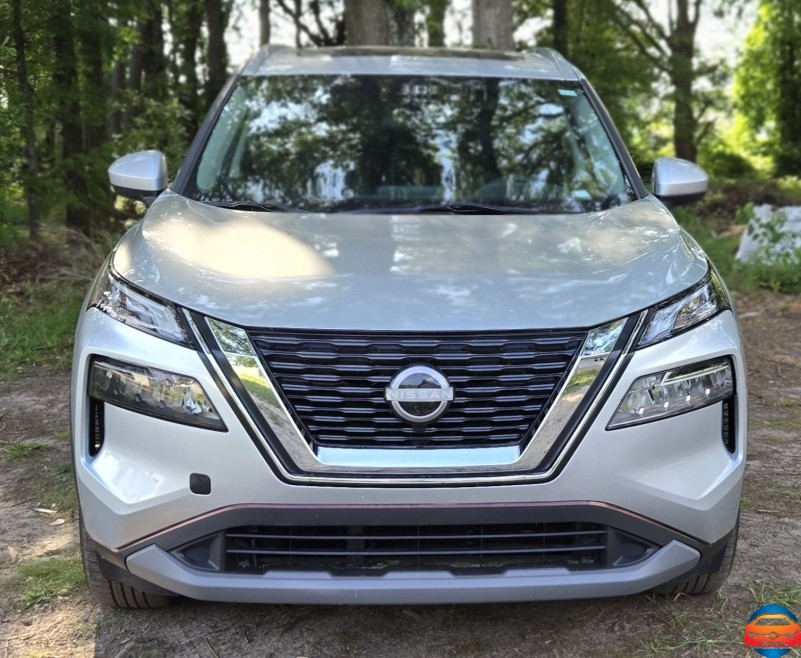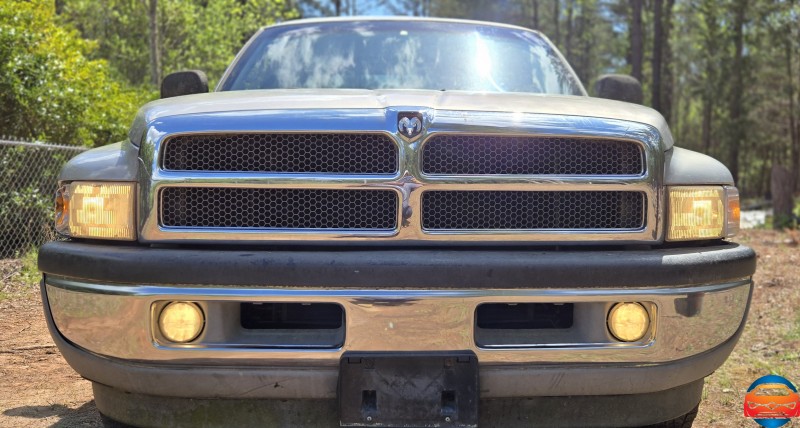-
191 Posts
-
115 Photos
-
5 Videos
-
Male
-
Followed by 28 people
© 2025 Social AmericA Network Online
 English
English
Recent Updates
-
https://autodeal.biz/index.php?qa=186&qa_1=2024-nissan-rogue-1-5l-v3-turbo-sv-leather
 AUTODEAL.BIZ2024 nissan rogue 1.5L v3 turbo sv leather2024 #Nissan #rogue SV 1.5L 3V vc #turbo, 6,200 miles, intelligent drive cruiser, line and blinds...0 Comments 0 Shares 63 Views 0 ReviewsPlease log in to like, share and comment!
AUTODEAL.BIZ2024 nissan rogue 1.5L v3 turbo sv leather2024 #Nissan #rogue SV 1.5L 3V vc #turbo, 6,200 miles, intelligent drive cruiser, line and blinds...0 Comments 0 Shares 63 Views 0 ReviewsPlease log in to like, share and comment! -
Clearing a paint gun after finishClearing a paint gun after finish
 0 Comments 0 Shares 163 Views 0 Reviews
0 Comments 0 Shares 163 Views 0 Reviews -
https://autodeal.biz/index.php?qa=185&qa_1=1999-dodge-ram-1500-long-bed-pickup
 AUTODEAL.BIZ1999 dodge ram 1500 long bed pickup1999 dodge ram 5.2L rear drive, great condition under, out, inside. Runs drives perf...0 Comments 0 Shares 151 Views 0 Reviews
AUTODEAL.BIZ1999 dodge ram 1500 long bed pickup1999 dodge ram 5.2L rear drive, great condition under, out, inside. Runs drives perf...0 Comments 0 Shares 151 Views 0 Reviews -
0 Comments 0 Shares 197 Views 0 Reviews
-
How to Detect a Power Leak & Prevent Battery Drain
1️⃣ Prepare Your Car: Turn off the engine, remove the key , lock the doors , and unplug any unnecessary devices.
2️⃣ Set Up the Multimeter: Switch it to DC current mode and select the highest amp range to avoid damaging the device.
3️⃣ Disconnect the Negative Battery Cable: Use a wrench to remove the negative cable (usually black ). Make sure it doesn’t touch any metal parts.
4️⃣ Connect the Multimeter: Attach the black (negative) probe to the battery’s negative terminal, and the red (positive) probe to the disconnected cable.
5️⃣ Read the Multimeter: If there's current flow, there's a power leak! A normal reading should be under 50 milliamps. Higher readings mean a battery drain issue.
6️⃣ Find the Faulty Circuit: Check the fuses one by one . When the reading drops, you’ve found the problematic circuit.
7️⃣ Fix the Problem: Look for damaged wires , loose connections, or faulty parts. Repair or replace as needed.
Solving power leaks protects your battery and keeps your car’s electrical system running smoothly!
#Automotive #CarRepair #BatteryDrain #MechanicLife #CarTech #AutoFix #CarMaintenance #FYP #Viral
By #technopedia
https://www.facebook.com/share/1ARALBuaLM/🔋🚗 How to Detect a Power Leak & Prevent Battery Drain ⚡🔍 1️⃣ Prepare Your Car: Turn off the engine, remove the key 🔑, lock the doors 🚪, and unplug any unnecessary devices. 2️⃣ Set Up the Multimeter: Switch it to DC current mode ⚡ and select the highest amp range to avoid damaging the device. 3️⃣ Disconnect the Negative Battery Cable: Use a wrench 🔧 to remove the negative cable (usually black ⚫). Make sure it doesn’t touch any metal parts. 4️⃣ Connect the Multimeter: Attach the black (negative) probe to the battery’s negative terminal, and the red (positive) probe to the disconnected cable. 5️⃣ Read the Multimeter: If there's current flow, there's a power leak! 🚨 A normal reading should be under 50 milliamps. Higher readings mean a battery drain issue. 6️⃣ Find the Faulty Circuit: Check the fuses one by one 🔎. When the reading drops, you’ve found the problematic circuit. 7️⃣ Fix the Problem: Look for damaged wires 🔥, loose connections, or faulty parts. Repair or replace as needed. ✅ Solving power leaks protects your battery and keeps your car’s electrical system running smoothly! ⚙️🚘 #Automotive 🔧 #CarRepair 🚗 #BatteryDrain ⚡ #MechanicLife 🔥 #CarTech 🏁 #AutoFix 🔍 #CarMaintenance 🚘 #FYP 🚀 #Viral 🚗 By #technopedia https://www.facebook.com/share/1ARALBuaLM/0 Comments 0 Shares 602 Views 0 Reviews -
KotaKota
 WWW.NATIONALSUPPLYS.COMKOTA HVLP SPRAY GUN PAINT WITH 1.3 or 1.4 MM NOZZLE (W/O CUP)KOTA HVLP SPRAY GUN PAINT WITH 1.3 or 1.4 MM NOZZLE (W/O CUP) This SPRAY GUN is Flexible application. Ergonomic. Easy handling. With the KOTA HVLP SPRAY GUN, painters can adjust the inlet pressure and the painting distance according to the paint used, the climatic conditions and their working style – and achieve perfect results in any situation. Robust and light – with ergonomic adjustment elements, the KOTA HVLP SPRAY GUN ensures comfortable working. The KOTA HVLP SPRAY GUN is designed to use a high volume of air at a low pressure to atomize and spray paint, use a large volume of air to atomize the paint particles, which creates a fine mist that can be sprayed onto the surface being painted. The low pressure allows for a more controlled spray pattern and reduces the amount of overspray. Product Benefits Flexible application: Optimized nozzle concept for various spray distances and inlet pressures Ergonomic design: Pleasant and compact handle shape combined with easy-to-operate control elements Fine adjustment: Optimized round / flat spray fan control with a half turn Suitable areas of application Car Refinish Industrial Applications Carpentry Decorative Painting Product information Nozzle Size: 1.3 or 1.4 mm Spray Gun Body Material: Aluminum HVLP: Paint spray guns achieve particularly high transfer rates with their low-pressure technology. Fits with Adapter: #2 (not Included)0 Comments 0 Shares 178 Views 0 Reviews
WWW.NATIONALSUPPLYS.COMKOTA HVLP SPRAY GUN PAINT WITH 1.3 or 1.4 MM NOZZLE (W/O CUP)KOTA HVLP SPRAY GUN PAINT WITH 1.3 or 1.4 MM NOZZLE (W/O CUP) This SPRAY GUN is Flexible application. Ergonomic. Easy handling. With the KOTA HVLP SPRAY GUN, painters can adjust the inlet pressure and the painting distance according to the paint used, the climatic conditions and their working style – and achieve perfect results in any situation. Robust and light – with ergonomic adjustment elements, the KOTA HVLP SPRAY GUN ensures comfortable working. The KOTA HVLP SPRAY GUN is designed to use a high volume of air at a low pressure to atomize and spray paint, use a large volume of air to atomize the paint particles, which creates a fine mist that can be sprayed onto the surface being painted. The low pressure allows for a more controlled spray pattern and reduces the amount of overspray. Product Benefits Flexible application: Optimized nozzle concept for various spray distances and inlet pressures Ergonomic design: Pleasant and compact handle shape combined with easy-to-operate control elements Fine adjustment: Optimized round / flat spray fan control with a half turn Suitable areas of application Car Refinish Industrial Applications Carpentry Decorative Painting Product information Nozzle Size: 1.3 or 1.4 mm Spray Gun Body Material: Aluminum HVLP: Paint spray guns achieve particularly high transfer rates with their low-pressure technology. Fits with Adapter: #2 (not Included)0 Comments 0 Shares 178 Views 0 Reviews -
Supercar blondie web unusual luxury vehicles around the globeSupercar blondie web unusual luxury vehicles around the globe
 SBXCARS.COMYour Gateway to Supercar Auctions | SBX Cars by Supercar BlondieJoin SBX Cars, the premier online auction platform for supercars and luxury vehicles. Bid on exclusive supercars, classic cars, and rare collectibles from around the globe. Discover your dream supercar today!0 Comments 0 Shares 398 Views 0 Reviews
SBXCARS.COMYour Gateway to Supercar Auctions | SBX Cars by Supercar BlondieJoin SBX Cars, the premier online auction platform for supercars and luxury vehicles. Bid on exclusive supercars, classic cars, and rare collectibles from around the globe. Discover your dream supercar today!0 Comments 0 Shares 398 Views 0 Reviews -
 WWW.GOODHOUSEKEEPING.COM7 Best Car Paint Sprayers of 2024, Reviewed by ProsGive your ride a shiny new coat of paint with these highly rated picks.0 Comments 0 Shares 851 Views 0 Reviews
WWW.GOODHOUSEKEEPING.COM7 Best Car Paint Sprayers of 2024, Reviewed by ProsGive your ride a shiny new coat of paint with these highly rated picks.0 Comments 0 Shares 851 Views 0 Reviews -
https://www.vettx.com/
 WWW.VETTX.COMPrivate Party Vehicle Acquisition | VETTXVETTX is the best solution for acquiring cars directly from private sellers. Maximize inventory, boost profits, and streamline your vehicle acquisition process.0 Comments 0 Shares 493 Views 0 Reviews
WWW.VETTX.COMPrivate Party Vehicle Acquisition | VETTXVETTX is the best solution for acquiring cars directly from private sellers. Maximize inventory, boost profits, and streamline your vehicle acquisition process.0 Comments 0 Shares 493 Views 0 Reviews -
How to Turn Off the "Check Engine" Light on Your Dashboard in 3 Simple Steps
1. Open the Hood:
Locate the car battery and use a wrench (socket or adjustable) to disconnect the negative cable. The negative terminal is usually marked with a minus (-) sign and may be covered by a protective cap.
2. Drain Residual Electricity:
Press and hold the horn for 30 seconds or turn on the headlights to discharge any remaining power in the system. Although neither will function without battery power, this step ensures that the capacitors are completely drained.
3. Wait for 15 Minutes:
Leave the battery disconnected for about 15 minutes to allow the vehicle's system to reset. Afterward, reconnect the negative cable to the terminal and secure it with the cap if applicable. Once reconnected, the error codes will be cleared, and the "Check Engine" light should turn offHow to Turn Off the "Check Engine" Light on Your Dashboard in 3 Simple Steps 🚗 1. Open the Hood: Locate the car battery and use a wrench (socket or adjustable) to disconnect the negative cable. The negative terminal is usually marked with a minus (-) sign and may be covered by a protective cap. 2. Drain Residual Electricity: Press and hold the horn for 30 seconds or turn on the headlights to discharge any remaining power in the system. Although neither will function without battery power, this step ensures that the capacitors are completely drained. 3. Wait for 15 Minutes: Leave the battery disconnected for about 15 minutes to allow the vehicle's system to reset. Afterward, reconnect the negative cable to the terminal and secure it with the cap if applicable. Once reconnected, the error codes will be cleared, and the "Check Engine" light should turn off0 Comments 0 Shares 692 Views 0 Reviews
More Stories




















